Feb 21, 2013 | ANA, books, coins, museum, tokens
I am in Colorado Springs attending meetings at the American Numismatic Association Headquarters about updating the technology that is being used to support the education mission of the ANA. I will talk about my time in Colorado Springs over the weekend, but let me talk about being at the ANA Headquarters.
After walking into the reception area, to the right of the reception desk is the museum store that leads to the Rochette Money Museum. Even with the current exhibition about the history of the Civil War in numismatics, the first floor also has the first steam press used by the U.S. Mint, the McDermott/Bebee specimen 1913 Liberty Head nickel, and an 1804 silver dollar. There is also a balance from the Denver Mint.
On the other side of the main level is the Harry W. Bass, Jr. collection of gold coins and rare patterns. Bass put together the finest and most complete set of gold coins ever assembled. After Bass died, his foundation donated a portion of the collection to the ANA. I posted some of the pictures to Twitter and Pintrest and will post more when I return home, but pictures do this collection justice. You have to come here to see it for yourself.
If you are an ANA member, you should make a trip to Colorado Springs to see the Money Museum. Aside from being a benefit of your membership, the ANA has an impressive collection that is nicely displayed and worth spending the time seeing. Numismatically, there is not a display like this in the United States, especially since the Smithsonian’s National Numismatic Collection was taken off of exhibit. The ANA Money Museum is the only place you can see a real half-union pattern, typesets of every gold coin ever struck by the U.S. Mint, and even the oldest known surviving currency note.
Do you like Hobo Nickels? It’s here. Assortment of Confederate currency? They’re here, too. Examples of world currency? That’s in the lower level gallery. It is near examples of colonial currency including two Maryland notes I have in my collection.
But wait, there’s more. Do you want to learn more about what you’re looking at? On the other side of the lobby is the Dwight Manley Library. In the Manley Library you can find nearly every book ever printed on numismatics including government reports, price guides, specialty books, and books on nearly every topic of numismatics.
The library also has the oldest known illustrated coin book, dating back to the 16th century. It uses images of ancient coins to talk about the various rulers of the time. This book and the oldest book about numismatics, which does not have images, written in Latin.
Before you leave the library, stop at the old card catalog case and see the printing press that ANA founder, Dr. George F. Heath, used to print the first six editions of The Numismatist.
Yes, you can check out books from the library and have them mailed to you. Yes, you can see the traveling exhibits at various shows around the nations. But to get the full impact of what the ANA has to offer, you have to come to Colorado Springs and see for yourself.
Aside from figuring out when I can schedule a return trip, I want to know why I received three, new 2013 White Mountain quarters struck in Philadelphia when I am 70 miles away from the Denver mint.
Feb 3, 2013 | coins, fun, history, medals, shows, tokens
Growing up in the metropolitan New York area, you can find people who live around all of these famous landmarks but had never visited them. Whether it is visiting the observation deck Empire State Building or the Statue of Liberty, sometimes jaded New Yorkers just never get around to it.
My mother was different. She grew up in Coney Island and was adept at navigating the subway, so she wanted her children to be as wise about our hometown. During breaks from school, especially the winter break, we would take the Long Island Railroad into Penn Station and do something or see something that a tourist would do.
One of the treats about taking this trip was seeing my father in his office in Manhattan. As a youngster, it was cool to see the people who you might have spoken with on the telephone when trying to call my father or someone he had spoken to my mother about. It was also my first look into my future of working in an office, something I tried to resist to no avail.
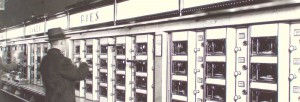
Lunch at the Automat (ca. 1940s)
Behind the machines was a kitchen that refilled the machines and a cashier was in the center of the dining hall to give change. When the Automat first opened, the machines only accepted nickels. Things were a little more expensive in the 1960s, an era before vending machines were able to accept currency, Horn & Hardart used tokens. Remember, this was a time there were almost no dollar coins in circulation, a reported shortage of coins, and when half-dollars stopped circulating because the silver was worth more than their face value.
Tables were set up all around the room like a cafeteria and the decor was what I would later understand to be art deco.
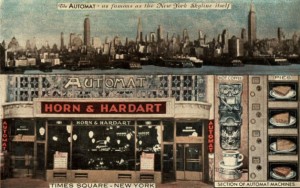
Automat in Times Square Postcard ca. 1939
A dash to see my father and then we went to the Automat. I remember I had a sandwich and soda. Then, as my mother ran to a quick shopping excursion, I argued with my father about getting a piece of pie. He finally gave in and bought the pie that the three of us shared as we waited for my mother to return. When she did return, packages in hand, my father went back to work and we took the subway downtown to see Macy’s front window. From Macy’s it is a short walk down 34th Street to Penn Station. We went downstairs under Madison Square Garden to board the Long Island Railroad to go home.
This trip down memory lane is courtesy of the Alexandria Coin Club whose annual show was held on February 2. It was a show filled with a nice mix of dealers with varying types of collectibles, I made the trip in the snow flurries to see what I could find. While searching through an exonumia dealer’s box, I found a token that was as irresistible as a youngster picking a sandwich from an Automat vending machine. A wide smile ran across my face as the memories of the food in the machines ran through my memories. There was no way I was leaving the show without an Automat token!
I am not sure what the token is made from, but it is heavier than aluminum. It is 20 mm in diameter, larger than the cent (19.05 mm) and smaller than the nickel (21.21 mm). The front has the distinct Automat logo and the reverse has a child at one of the set of vending machines reaching up for his treat. Around the edge, it says the token commemorates the 70th anniversary of the Automat, which dates the token to 1981. What a great addition to my New York collection. Not only is it different but the memories are priceless.
Along with the Automat token I also found a commemorative medal someone issued for the Statue of Liberty centennial in 1986 and an aluminum souvenir from the Democratic National Convention held July 12-16, 1976 in New York City. When I picked it up I thought it had the look of a Mardi Gras token. When I turned it over, it says it is from Louisiana. The reverse image is that of a pelican since Louisiana’s official nickname is “The Pelican State.” Since the convention was in New York, it is added to my New York collection. Now I need to find something numismatic related from the 2008 Republican National Convention that was held in Madison Square Garden to balance the collection.
By the time I was old enough to become interested in the Automat it was in its decline. In the 1960s saw a decline in their clientele as people started to leave the city to live in the suburbs. Then companies began to open their own cafeterias and buildings reconfigured their lobbies to bring in retail customers including eating establishments. Finally, the city closed a loophole that allowed cafeteria patrons to avoid paying sales taxes and it forced the Automat to raise prices to cover the new tax burden. High labor and food costs drove its regular customers away as quality declined and the restaurants grew seedy. H&H closed half of their locations by 1971. By 1991, the last Automat in New York closed its doors for the last time.
Feb 1, 2013 | exonumia, medals, news, obituary, tokens
My hometown was in the news today for two very different reasons, yet both remind me of why I continue to love New York.
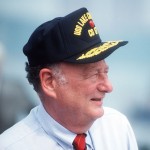
Mayor Ed Koch at the commissioning ceremony for the USS LAKE CHAMPLAIN (CG 57), 1988
Koch’s exuberance and love of New York propelled himself and the city from the what was seen as the bottom to a trajectory that you could not think of New York without Ed Koch or Ed Koch without New York. Koch’s perpetual question, “How am I doing?” will forever be his trademark throughout the streets, cabs, subways, highways, and byways of New York City.
A more happier note, it was on February 1, 1913 that Grand Central Station (really named “Grand Central Terminal” but that’s not what we called it growing up in New York) opened. It was not the first terminal on the site to bear the Grand Central name. The previous version opened in 1903 and comprised of three separate buildings. Over the next ten years the structure that stands there today was built in phases that including the underground rail tunnels that are still in use today.
Grand Central underwent a rehabilitation that started in 1994 through 2000 that cleaned up the famous ceiling in the grand concourse and reconfigured the above ground areas to include more shops. But it still represents the major transportation hub of New York.
Collecting transportation tokens are the ultimate numismatic collection that represents local history. Transportation has been at the heart of every city and can be used as a personal tie to your collectible. Tokens and medals representing local transportation can be more beautiful and significant than coins from the same era. Not long ago, I was able to find a pewter medal from the dedication of the East River Bridge. The bridge was rename in 1915 and is known today as the Brooklyn Bridge.
Having a collection of subway tokens reminds me of all those subway trips I had taken over the course of my life and the sesquicentennial medal of the Long Island Railroad represents my daily commutes from Long Island to my job at 30 Rock.
As I think about my hometown today, remember where you are from and consider starting a collection of tokens and medals that helps to tell your story. It can be as rewarding as your memories.
And to Hizzoner, you did just fine! Rest in peace.
Image of Ed Koch courtesy of Wikipedia.
Oct 27, 2012 | auction, Carson City, coins, gold, GSA, silver, tokens
How many of you look at the online auctions from the auction houses dedicated to numismatics and feel intimidated?
I can see quite a few virtual hands raised. You probably like coins shows but find the large crowds at some of those shows may also be intimidating. After all, you’re a collector, not an investor or a professional. Sometimes, you can find gems at smaller shows and even smaller auctions.
This is why I was intrigued by an auction notice sent by Stephenson’s Auctioneers and Appraisers from Southampton (Bucks County), Pennsylvania. Judging by their website, Stephenson’s is a local auction company that mainly serves buyers and sellers in its region with and probably has some clientele outside the eastern Pennsylvania area where they are located.
The nice thing about these local auction houses is that they are more accessible than the big houses and they usually have items that are affordable to the average collector. While high-end auctions are fun, if you are buying for yourself, you may not be the type looking to spend six-figures or higher on a coin.
If that is the case and you are in the Bucks County, Pennsylvania area on Friday, November 2, you may want to stop by Stephenson’s and check out their more than 200-lot coin auction that may include “some nice last-minute surprises.”
These are estate auction from the eastern Pennsylvania area. According to the information sent to me, the auction includes a wealth of Morgan silver dollars will be offered, with no fewer than 15 lots comprised of three Morgans each. An uncirculated 1882 Carson City Morgan silver dollar is one of the highlights, and another early example is a trade silver dollar dated 1877. Other antique American coins include Capped Bust half dollars from 1809 and 1838; an 1806 Draped Bust half dollar, and a Seated Liberty half dollar from 1843.
The auction includes two gold pieces. One is a 1914 Indian Head quarter eagle ($2½) and a 1917 $1 gold coin commemorating the slain U.S. President William McKinley.
There are many collectors’ books of coins, including a Washington quarter book (1932-1945) with 24 silver quarters, a Liberty Head nickel book (1883-1912) with 25 nickels, a Standing Liberty book with 10 silver half dollars, a Mercury dime book with 74 silver dimes, including 1921 and 1921-D; and a book consisting of 60 Buffalo nickels. Also included are a Walking Liberty half dollar book with 14 half dollars, a Barber dime book, Roosevelt dime book and Kennedy half dollar book with 59 Kennedy halves, including three 1964 and nine 1965 through 1970 coins. Flying Eagle and Indian Head penny sets will be available, as well as many other books, too numerous to mention.
Desirable non-monetary gold and silver items with both intrinsic and historical value include a boxed set of three 24K gold over .999 silver ingots commemorating the 1973 Triple Crown Winner Secretariat, and a framed sterling silver set titled “The Official Bicentennial Medals of the Thirteen Original States.”
Other lots of interest include two California Gold tokens (1852 and 1853) and an 1860 $5 note issued by the Miners and Planters Bank of North Carolina. Fractional currency, and U.S. Prestige and Olympic Prestige sets.
Auction will be held on Friday, November 2, 2012 at Stephenson’s gallery located at 1005 Industrial Blvd., Southampton, PA 18966. Auction preview is on the auction day from 2-4 p.m. The auction starts at 4 p.m.
For additional information, call Cindy Stephenson at 215-322-6182 or e-mail info@stephensonsauction.com. There will be no Internet bidding for this sale; it is exclusively for gallery, phone and absentee bidders. Visit Stephenson’s online at www.stephensonsauction.com.
If you are in the area, go and have some fun. Who knows, you may find something interesting to bid on!
Some of the items in this auction
-

-
1882 Carson City uncirculated Morgan silver dollar with original GSA box and paperwork. You do not see too many CC Morgans with the original box and paperwork!
-
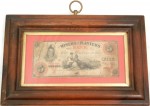
-
1860 $5 note, Miners and Planters Bank of North Carolina.
-

-
Three 24K gold over .999 silver ingots Commemorative of Secretariat.
-

-
Thirteen sterling silver “Official Bicentennial Medals of the Thirteen Original States.”
-
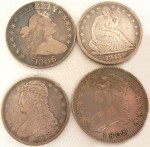
-
Early US coins, including 1809 and 1838 Capped Bust half dollars, 1806 Draped Bust silver dollar, and a, 1843 Seated Liberty half dollar.
-
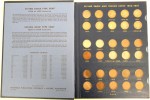
-
Flying Eagle and Indian Head Cent set in a Whitman Album
-

-
1914 Indian Head Quarter Eagle ($2½) gold coin and McKinley Commemorative “Dollar” gold piece.
-
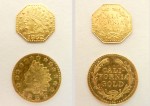
-
1852 and 1853 California Gold Rush tokens
All images courtesy of Stephenson’s Auctioneers.
Oct 22, 2012 | coins, exonumia, fun, other, personal, tokens
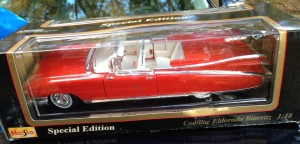
My dream car… in model form!
Saturday was the 2012 Rockville Antique and Classic Car Show, a yearly show supported by 25 local and regional car clubs. When I arrived around 1 o’clock I saw a field with more than 500 antique and classic cars. Although I was not interested in some cars, there were others that were absolutely stunning. While I did not find a 1959 Cadillac, there were a few cars that I would love to own. You can see some of the cars I found and a quick video of the inside of a Volkswagen Bus visit on my page at Photobucket.†
While the 1959 Cadillac is my dream car, my nostalgic car is a 1973 Plymouth Gold Duster. While it was not my first car, it ranks one of my favorites from my early days. This Gold Duster was “sunshine yellow” with the brown snake-skin three-quarter covered vinyl top. The 225 Hemi Slant 6 engine output 145 horsepower but was more than enough for this car especially since it did not have air conditioning! My father bought it as a new car in 1973 and I “inherited” it in 1980 while in college. Unfortunately, it met its demise on a rainy road while trying to avoid hitting a dog.
To satisfy my nostalgia, I was looking at the wares of the flea market dealers in the adjacent lot when I came across a brochure for the 1973 Gold Duster. “Get Ready to Stake Your Claim” screams the headline on the front cover. Open the brochure and it tells you that “You’ve Discovered Gold Duster.” While admiring the picture that reminded me of my youth, I noticed the coin image at the bottom right corner that said:

If you cannot read the image, it says:
BLAKE & COMPANY $20.00 GOLD PIECE
This gold coin is a replica of the fame Twenty Dollar California Gold Piece, struck in about 1855, that bought sustenance during the days of the great Gold Rush.
This is a replica of only two known specimens. The originals are so rare no value has been established.
Notice the very fine detail and workmanship. The press embossed on the coin is a good representation of what a coin press looked like in the 1800’s. The milling around the edge of the coin was done to prevent shaving the coin—thereby decreasing its value. The original coins were .900 pure gold.
You can make a complete collection of famous United States coins by consulting the back page of this booklet.
Interested in what this collection can be, I turned over the brochure see a 1973 advertisement for 12 “authentic replicas” of the Chrysler-Plymouth “Old West” Coin Collection. The collection appears to be replicas of various assay tokens from the famous gold assayers of the time. For $7.75 per set (or $40.39 today), you could have ordered a full set along with a vinyl/velour folder.

Chrysler-Plymouth “Old West” Coin Collection Order Form from 1973 Plymouth Gold Duster Brochure
At the intersection of cars and numismatics I found fascinating piece of automotive advertising history with a numismatic slant. I do not know if a version of this set has survived—an Internet search yielded more copies of the brochure—but it would be interesting to find a set.
† At the time this is posted, I have not labeled the images on Photobucket. I hope to finish that sometime this week.
Sep 30, 2012 | coins, fun, medals, shows, tokens
On Saturday I had the pleasure of attending the Virginia Numismatic Association Annual Show in Fredericksburg, Virginia. Fredericksburg is about half-way between Washington, DC and Richmond. After a late morning start, I ate a quick breakfast and climbed into the old X3 and hit the road to make my first stop to honor National Coffee Day at a nearby coffee shop.
With hot java in the accessible coffee holder, the X3 was pointed to the highway and we headed south to Fredericksburg. For the most part, it was a pleasant trip except for the last 12 miles where I found myself in what was called a usual traffic delay to the Rappahannock River. Along the way, I was able to use the new iOS 6 maps program with GPS capabilities with no issue. For those who heard the alleged “horrors” of Apple’s map program, I found that for daily use I have had no problems. I think most people who do not try to find obscure addresses (i.e., like trying to map an weird address near a park) will find that it is a quite adequate app.
Relieved of the frustration caused by I-95 traffic, I exited at Route 3 and let the GPS guide me to the Fredericksburg Expo & Conference Center. It is a nice facility with nearby hotels and a large shopping area. Travelers who might have forgotten something would not have to travel far to find a replacement.
Interestingly, the USA Fencing Virginia 2012 KickOff Classic Circuit Fencing Tournament was being held in a different part of the center. It made for a good mix of numismatists and fencers walking in the parking lot. However, it was a little disconcerting when a gentleman was walking toward me in the parking lot carrying four fencing foils!
I registered at the front door and spoke with a number of the VNA people. I met a few of their officers and talked while I wrote my name on a few raffle tickets. Each hour, the VNA raffles of something. There were books, coins, tokens, and medals in the case that showed what was part of each hour’s raffle. You do not have to be present to win, but I did have to write my name and telephone number on 11 tickets which I purchased for $10. Once done, I walked by a Stafford County police officer and entered the bourse floor.
The show was in a pretty large hall with about 50 tables. There seemed to be a slight din of activity but nothing too overwhelming. As I walked around the floor looking at the items on a number of tables, I spoke with quite a few people. There were even a few I had met at other shows like the Whitman Baltimore show. Some said that Saturday was a bit slow, especially as compared to previous years. After a while, I asked some of the Virginia-based dealers if the nice weather and the college football games, specifically the Virginia Tech-Cincinnati game that was played at FedEx Field in Landover, Maryland (home of the Washington Redskins) and the Virginia-Louisiana Tech game in Charlottesville (both Virginia schools lost).
It has been a long time since I have been to a smaller show (under 100 tables). Even with the large venue, the fewer tables and with dealers I have never met before from areas of Virginia and North Carolina, it made for a relaxing atmosphere. Many of these dealers also had a different way of handling their inventory such as currency dealers who did not have everything graded and many of their lower quality but desirable series in books in the table for collectors to browse. For the collector on a budget who wants to consider notes with character, being able to flip through a book of these notes is a great idea and, even if you are not a currency collector, a lot of fun just to look. I liked having this type of accessibility and it was refreshing.
There were not many exhibits at this show. I did capture two pictures of exhibits I thought were interesting (see my Pinterest board), but I wish there were more.
At the end of the aisles in the center was an exhibit of philately (stamps) along with pictures that were about Virginia and the its role in the Civil War and after. This exhibit has a few great, vintage pictures of General Ulysses S. Grant (before he became president) including one where his portrait is aside one of General Robert E. Lee. Unfortunately, the pictures had take did not come out well (and I forgot to try again after being distracted).
After four hours of looking and schmoozing, I went back to the X3, plugged in my iPhone, and found that the game was being streamed by CBS through their iPhone app. After a stop to make sure I supported National Coffee Day again, I plugged in the iPhone and listened to the broadcast during the drive home. I am not sure which was worse, the traffic or the lack of defense during the game!
I arrived home in time to see the fourth quarter and make sure the final score was at least in my favor. Feeling better for the win, I was able to reflect on the good time I had at the VNA Convention while having dinner with my wife.
Congratulations to the Virginia Numismatic Association for putting on a good show.
-
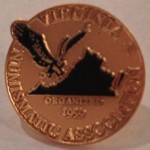
-
Virginia Numismatic Association pin that I purchased at the table where I also purchased raffle tickets.
-

-
A panorama view of the bourse floor at the 2012 VNA Convention
-
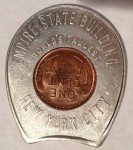
-
1949 Empire State Building Encased Cent announcing it as the “World’s Tallest Building,” which it was in 1949.
-

-
Token to ride the Port Authority of the Trans-Hudson subway system. PATH ties New Jersey to New York and is run by the Port Authority, the same people who own the World Trade Center.
-

-
25th Anniversary Middle Atlantic Numismatic Association Medal from 1977. MANA is now defunct but used to be an umbrella organization for the Washington, DC metro area.
-

-
Reverse of the 25th Anniversary Middle Atlantic Numismatic Association Medal.
-

-
This was hanging on the door leaving the convention hall. Based on the last line regarding no more proofs after 1964, I think this was produced in either 1964 or 1965.
-
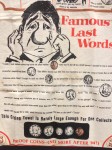
-
Close up view of the text on the Coin Collector’s Crying Towel
Jul 2, 2012 | currency, education, exonumia, medals, tokens
Although the dominant area of numismatics is the collection and study of legal tender coins, numismatics is more than just coins. Numismatic is the collecting and study of items used in the exchange for goods, resolve debts, and objects used to represent something of monetary value. This opens up numismatic collecting to a wide range of items and topics that could make “the hunt” to put together the collection as much fun as having the collection.
Exonumia
Exonumia is the study and collection of tokens, medals, or other coin-like objects that are not considered legal tender. Exonumia opens numismatics to a wide variety of topics that could not be satisfied by collecting coins alone. An example of exonumia is the collection of transportation tokens. You may be familiar with transportation tokens from your local bus or subway company who used to sell tokens to place into fare boxes. Others may have used tokens to more easily pay in the express lanes at bridges and tunnels. A person who collects transportation tokens is called a Vecturist. For more information on being a Vecturist, visit the website for the American Vecturist Association.
Token collecting can be the ultimate local numismatic collection. Aside from transportation tokens, some states and localities issued tax tokens in order to collect fractions of a cent in sales taxes to allow those trying to get by in during down economic times to stretch their money further. Some communities issued trade tokens that allowed those who used them to use them as cash at selected merchants. Some merchants issued trade tokens that were an early form of coupons that were traded as coupons are traded today.
While tokens are items used to represent monetary value, medals are used to honor, commemorate, or advertize. The U.S. Mint produces medals that honor people, presidents, and events. Medals produced by the U.S. Mint are those authorized by law as a national commemoration including the medal remembering the attacks of 9/11.
Commemorative medals are not limited to those produced by the U.S. Mint. State and local governments have also authorized the producing medals on their behalf that were produced by private mints. Many organizations also have created medals honoring members or people that have influenced the organization. Companies have produced medals to honor their place in the community or something about the company and their community.
Many medals have designs that can be more beautiful than on coins since they are not limited to governmental mandated details and their smaller production runs allows for more details to be added. Medals can be larger and thicker than coins and made in a higher relief than something that could be manufactured by a government mint.
Exonumia collecting also involves elongated and encased coins. You may have seen the machines in many areas where you pay 50-cents, give it one of your cents, turn the wheel and the cent comes out elongated with a pattern pressed into the coin. Elongated coins have been used as advertisements, calling cards, and as a souvenir.
Encased coins are coin encircled with a ring that has mostly been used as an advertisement. One side will call the coin a lucky coin or provide sage advice with the other side advertising a business. Another form of encased coins are encased stamps. Encased stamps were popular in the second half of the 19th century and used for trade during times when there were coin shortages.
Other exonumia includes badges, counter stamped coins, wooden money, credit cards, and casino tokens. Counter stamped coins are coins that have been circulated in foreign markets that were used in payment for goods. When the coin was accepted in the foreign market, the merchant would examine the coin and impress a counter stamp on the coin proclaiming the coin to be genuine based on their examination. Although coins were counter stamped in many areas of the world, it was prevalent in China where the coins were stamped with the Chinese characters representing the person who examined the coin. These Chinese symbols are commonly referred to as “chop marks.”
One type of counter stamped coins are stickered coins. Stickered coins were popular in the first half of the 20th century; they were used as an advertisement. Merchants would purchase stickers and apply them to their change so that as the coins circulated, the advertising would reach more people. Some stickered coins acted as a coupon to entice the holder to bring the coin into the shop and buy the merchandise.
Remember the saying, “Don’t take any wooden nickels?” If you are a wooden money collector, you want to find the wooden nickels and other wooden denominations. Wooden nickels found popularity in the 1930s as a currency replacement to offer money off for purchases or as advertisement. Wooden nickels are still being produced today mostly as an advertising mechanism.
We cannot end the discussion of exonumia without mentioning Love Tokens and Hobo Nickels. Love Tokens became popular in the late 19th century when someone, usually a man, would carve one side of a coin, turn it into a charm for a bracelet or necklace, and give it to his loved one. The designed are as varied as the artists who created them. Hobo Nickels are similar in that hobo artists would carve a design into a Buffalo Nickel to sell them as souvenirs. While there are contemporary Love Tokens and Hobo Nickels, collectors have an affection for the classic design that shows the emotion of the period.
Currency collecting, formally called notaphily, is the study and collection of banknotes or legally authorized paper money. Notes can be collected by topic, date or time period, country, paper type, serial number, and even replacement or Star Notes (specific to the United States). Some consider collecting checks part of notaphily. Collectors of older cancelled checks are usually interested in collecting them based on the issuing bank, time period, and the signature. For the history of currency and their collecting possibilities, see my previous article, “History of Currency and Collecting”.
Scripophily is the study and collection of stock and bond certificates. This is an interesting subset of numismatics because of the wide variety of items to collect. You can collect in the category of common stock, preferred stock, warrants, cumulative preferred stocks, bonds, zero-coupon bonds, and long term bonds. Scripophily can be collected by industry (telecom, automobile, aviation, etc.); autographs of the officers; or the type of vignettes that appear on the bonds.
Militaria: Honorable Collectibles
Collecting of military-related items may be considered part of exonumia but deserves its own mention. It is popular to collect military medals and awards given to members since the medals themselves are works of art. Families will save medals awarded to relatives and even create museum-like displays to honor or memorialize the loved one.
Militaria includes numismatic-related items that represent the various services. One of the growing areas of collectibles is Challenge Coins. A challenge coin is a small medal, usually no larger than 2-inches in diameter, with the insignia or emblem of the organization. Two-sided challenge coins may have the emblem of the service on the front and the back has the emblem of the division or other representative service. Challenge coins are traditionally given by a commander in recognition of special achievement or can be exchange as recognition for visiting an organization.
Over the last few years, civilian government agencies and non-government organizations (NGO) have started to create and issue challenge coins. Most of those agencies have ties to the military, but not all. Like their military counterparts, a manager or director can give challenge coins in recognition of special achievement or for visiting an organization.
Another area of military collectibles is Military Payment Certificates (MPC). MPC was a form of currency that was used to pay military personnel in foreign countries. MPC were first issued to troops in Europe after World War II in 1946 to provide a stable currency to help with commerce. MPC evolve from Allied Military Currency (AMC) to control the amounts of U.S. dollars circulating in the war zone and to prevent enemy forces from capturing dollars for their own gain. Prior to World War II, troops were paid in the currency of the country where they were based. With the ever moving fronts and the allies need to control the economies to defeat the Axis powers, AMC was issued to allow the military to control their value.
After the war, MPC replaced APC in order to control the currency and prevent the locals from hoarding U.S. dollars preventing the building of their own economies. When military officials discovered that too many notes were in the circulation, being hoarded, and thriving on the black market, series were demonetized and reissued to military personnel. Those holding MPC notes not in the military received nothing and were encouraged to circulate their own currency.
MPC were printed using lithography in various colors that changed for each series. From the end of World War II to the end of the Vietnam War there were 15 series printed with only 13 issued. Although the two unissued series were destroyed, some examples have been found in the collections of those involved with the MPC system. Amongst the 13 series that were issues, there are 94 recognized notes available for collectors. Most notes are very affordable and accessible to the interested collector.
Mar 8, 2012 | tokens
While watching the Super Tuesday results, numismatists were treated to a new potential collectible: the Idaho Caucus Coin.
 The Idaho Caucus Coin, part of a new process this year, was used during the caucus in Boise, Idaho. Caucus goers were given a specially made coin to drop it in a closed canister for the candidate of their choosing. When the voting ended, the coins were “counted” by weighing them. If the caucus judges felt that the weight was wrong, they could request the coins be counted. First they would be counted by machine and, if that was not satisfactory, the coins would be counted by hand. There have been no reports that counting was requested.
The Idaho Caucus Coin, part of a new process this year, was used during the caucus in Boise, Idaho. Caucus goers were given a specially made coin to drop it in a closed canister for the candidate of their choosing. When the voting ended, the coins were “counted” by weighing them. If the caucus judges felt that the weight was wrong, they could request the coins be counted. First they would be counted by machine and, if that was not satisfactory, the coins would be counted by hand. There have been no reports that counting was requested.
During the caucus, if no candidate received more than 50-percent of the coins, those receiving less than 10-percent were dropped from the next round or the candidate with the lowest total would be dropped. This process would continue until one candidate received more 50-percent of the coins.
During a live report on CNN, the reporter showed a specially made coin for the event that was copper in color. Although CNN did not focus on the coin, it looked similar in size to the U.S. One Cent coin. CNN did not comment on the composition or the design of the coin used.
A query has been sent to the Canyon County Republican Party asking about purchasing the coin. This post will be updated when someone provides information.
Image courtesy of Boise State Public Radio.
Dec 22, 2011 | auction, tokens
Every year, usually in December, my coin club holds its annual Donated Auction. It is an auction that lasts the entire meeting of various numismatic items where the proceeds go to the local chapter of the Boys and Girls Club. It is a tradition that has existed for the 52 years of the club’s existence and I am happy that it continues.
As opposed to our regular monthly auction, there are more lots and a lot of different type of items. And since the proceeds go to charity, we are encourage to bid early and bid often. I have to admit that on items I really want, I have been known to overbid on items.
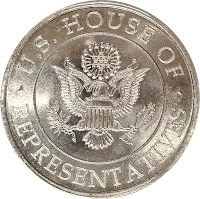
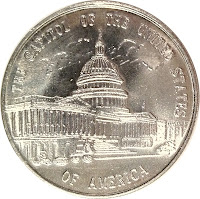 One of my overbids was for a lot with two rolls of Lincoln Cents; one roll contained 40 steel cents and the other had 50 miscellaneous wheat back cents. However, as a bonus, this lot included a U.S. House of Representatives token. Made of aluminum, about 40mm in diameter, the front of the token is the seal of the U.S. House of Representatives. The reverse depicts the east entrance of the capitol building with the south wing closer to the foreground. The south wing is where the chamber for the House of Representatives is located. The member that donated the token was a former staffer for one of the House committees who told me that the tokens were provided to staffers to give to visitors. Although the token is made of aluminum and not that rare, I have not seen one. Since I thought it had that “oh neat” factor, I overbid in order to win the lot and this token.
One of my overbids was for a lot with two rolls of Lincoln Cents; one roll contained 40 steel cents and the other had 50 miscellaneous wheat back cents. However, as a bonus, this lot included a U.S. House of Representatives token. Made of aluminum, about 40mm in diameter, the front of the token is the seal of the U.S. House of Representatives. The reverse depicts the east entrance of the capitol building with the south wing closer to the foreground. The south wing is where the chamber for the House of Representatives is located. The member that donated the token was a former staffer for one of the House committees who told me that the tokens were provided to staffers to give to visitors. Although the token is made of aluminum and not that rare, I have not seen one. Since I thought it had that “oh neat” factor, I overbid in order to win the lot and this token.
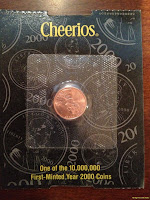
 My other “oh neat” purchase was a Cheerios Penny. The Cheerios Penny is a 2000 Lincoln Cent that placed onto plastic-sealed cards and placed in boxes of Cheerios as a special Y2K promotion. Cheerios was provided the first 10 million Lincoln Cents off the presses in 2000 by the U.S. Mint. These cents are really unremarkable except for being in the Cheerios package. The remarkable cents also included one of the first 5,500 new Sacagawea Dollars to raise awareness of the new “Golden Dollars.” The Cheerios Dollar is notable as being struck from different dies than the regular business strike Sacagawea Dollars.
My other “oh neat” purchase was a Cheerios Penny. The Cheerios Penny is a 2000 Lincoln Cent that placed onto plastic-sealed cards and placed in boxes of Cheerios as a special Y2K promotion. Cheerios was provided the first 10 million Lincoln Cents off the presses in 2000 by the U.S. Mint. These cents are really unremarkable except for being in the Cheerios package. The remarkable cents also included one of the first 5,500 new Sacagawea Dollars to raise awareness of the new “Golden Dollars.” The Cheerios Dollar is notable as being struck from different dies than the regular business strike Sacagawea Dollars.
According to the auction lot listing, there was supposed to be one Cheerios Cent and three wooden nickels. However, when I arrived at home and opened the package, there were two Cheerios Cents. If you would like your own Cheerios Cent, you can buy it on eBay!
Buying “oh neat” with the proceeds going to charity is a lot of fun.
Oct 20, 2011 | tokens
This week I received the “Gift Preview 2011” catalog from Hammacher Schlemmer. Within its pages was a note that said that during the Civil War, Hammacher Schlemmer was allowed to strike their own coins because of a shortage of circulating coinage. Their “Rebellion Tokens” was made from copper.

If you are not familiar with Hammacher Schlemmer, the company started in 1848 as a hardware store. As time went on, the company expanded into high-end merchandise that was high quality and highly innovative. For the last three decades, Hammacher Schlemmer has supported innovative inventors through its Hammacher Schlemmer Institute testing and reviewing new products to sell to their clientele. The claim that they are America’s longest running catalog with over 168 years without interruption.
Not only does the catalog have interesting items, but interesting facts about Hammacher Schlemmer.
Image taken from the Hammacher Schlemmer “Gift Preview 2011” catalog.





























